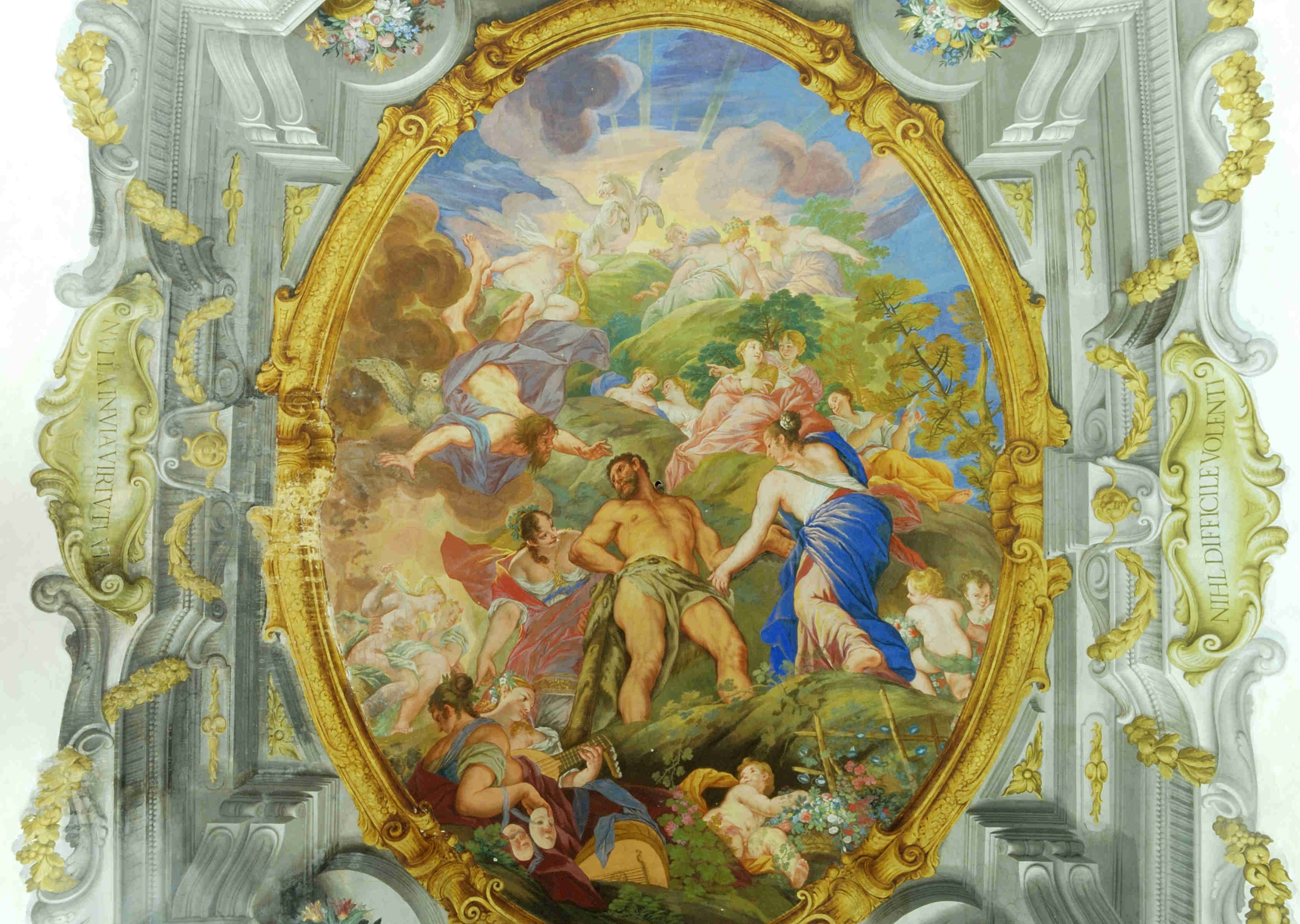
In 1691, Giuseppe and Tommaso Nasini painted what is now the vault of the exhibition hall in the library. It depicts the story of Hercules at the crossroads, the choice that the young hero must make between the easy way to pleasure and the hard one to virtue. An oval frame encloses this complex narrative, rich in symbolic figures. The fresco reveals the intervention of several hands, all of which performed their tasks successfully. Nevertheless, the figure of Hercules reveals some discrepancies and lack of proportion, probably due to different and changing requests from the Riccardi’s. The end result is very similar to the ancient statue of Mars in the palace’s courtyard, which was eventually topped with the head of Cosimo Riccardi (Francesco’s father) to pursue an overt and celebratory intent.
The four medallions placed at the corners of Francesco Sacconi’s elegant architectonic frame allude to the heroic deeds from Hercules’ Twelve Labors. More precisely, they refer to the golden apples of the Hesperides, the fight against Antaeus, the Nemean lion, and (in very poor condition) an episode that is most likely to be identified with the Lernaean hydra. The Riccardi family also owned four low-reliefs (the work of a skillful sixteenth-century artist), which were originally part of their collection in Valfonda before being transferred to the new palace.
